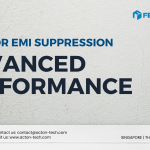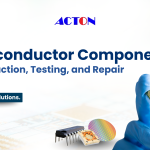
In today’s fast-evolving technological landscape, artificial intelligence (AI) has become a transformative force, driving innovation across nearly every industry. While AI’s emergence initially sparked concerns, it has been met with even greater excitement and optimism. By blending computing, mathematics, and science, AI has pushed the boundaries of what we once thought possible, creating countless new opportunities in sectors like healthcare, finance, and manufacturing.
As Grant Cordone once said, “With every triumph, there’s going to be challenges.” That’s where Laird’s innovative solutions come in, helping engineers and manufacturers overcome hurdles and unlock the true potential of AI.
Exploring the Origins of AI
AI’s journey began in the early 20th century, when scientists envisioned machines with “general intelligence” that could mimic human reasoning. John McCarthy coined the term “Artificial Intelligence” in the 1950s, laying the groundwork for decades of research. Despite early setbacks in the 1970s and 1980s, AI experienced a renaissance in the 2000s, fueled by digital data, computing power, and machine learning algorithms.
Benefits and Challenges of AI
Benefits:
Challenges:
AI is reshaping industries, from early disease detection in healthcare to automated production in manufacturing. In finance, AI algorithms are used to predict market trends and enhance decision-making.
However, AI adoption also brings challenges, including algorithm bias, data privacy concerns, and difficulties integrating advanced technologies like IoT and 5G. High energy costs and performance issues also remain key concerns.
Taking a Closer Look at the Hurdles Faced with Operating AI Hardware: Achieving Operational Excellence with Laird
Founded by John Laird in 1824, Laird Technologies initially built numerous ships for the Royal Navy, but in the 1980s, the company moved into the business of selling security products. The company then stepped into the electronic industry in the 1990s and today, it is one of the world leaders in this field, delivering tailored, innovative solutions that push the boundaries of technology. Let’s have a glance at some of the unprecedented performance hurdles faced with powering AI hardware (chips) and how Laird navigated these concerns to attain optimal performance and reliability:
Obstacle 1: Crossing the Hurdle of Overheating
When it comes to AI accelerators (chips), these components play a crucial role in processing a large amount of data whilst carrying out complex computations. These functions are done within a fraction of a second, and therefore, AI chips require a lot of power to do so. These processes are unfortunately associated with the obstacle of excessive heating. This is a significant concern and has troubled many designers as thermal interface materials do not typically have a low thermal resistance. Thermal interface materials with low thermal resistance will ensure these large conductive heats are transferred. The benefit? Reduced processor failures, faster performance, and lower temperature spikes.
Laird’s Solution: The company offers an extensive thermal interface material portfolio that not only comes with low resistance but also mitigates the need for high energy costs due to cooling. It also addresses other AI challenges, such as high device power density and unreliability.
Obstacle 2: Navigating Electromagnetic Interference Issues
Another common concern with AI chips is excessive electromagnetic interference (EMI) and this issue is further heightened by the use of high board densities. These tightly packed board designs are essential for ensuring integrated circuit reliability but may result in performance failures due to overheating.
Laird’s Solution: Thanks to Laird’s novel product solutions and innovative tools, engineers and designers now have access to products that can help them manage any excessive heat or EMI issues. For more information on Laird’s steward inductive components and other products like ferrite core cables, chip inductors, and ferrite beads, reach out to us at Acton Technology.
Obstacle 3: Overcoming Excessive Noise Interruptions
AI chips are intricate electronic components that comprise large data sets with computing hardware and machine learning algorithms. When dealing with such high-powered AI chip architectures, engineers and designers are often plagued by excessive noise concerns.
Laird’s Solution: In the quest to address excessive noise concerns, Laird provides short wavelength absorbers that will not only mitigate this problem but will also ensure high reliability. Their absorbers are designed from dispensable 3D thermoplastic absorbers that can meet AI hardware’s high-frequency needs and trends.
Receive Top-Tier Products and Services from Singapore’s Most Trusted Distributor of Electronic Components: Acton Technology!
With over two decades of experience in the electronic and semiconductor industry, Acton Technology has the expertise to navigate the technological challenges any company faces. With a comprehensive range of top-notch products and services, you can rely on us to transform your AI system into a roaring success. When you partner with Acton Technology, you partner with inspiration, innovation, and excellence. So don’t miss out on this wonderful opportunity! Get in touch with us and get more information about Laird’s steward inductive components and other integral AI components now!






